Shoot Like a Painter, Think Like an Artist – by Dan Ballard
February 2nd, 2012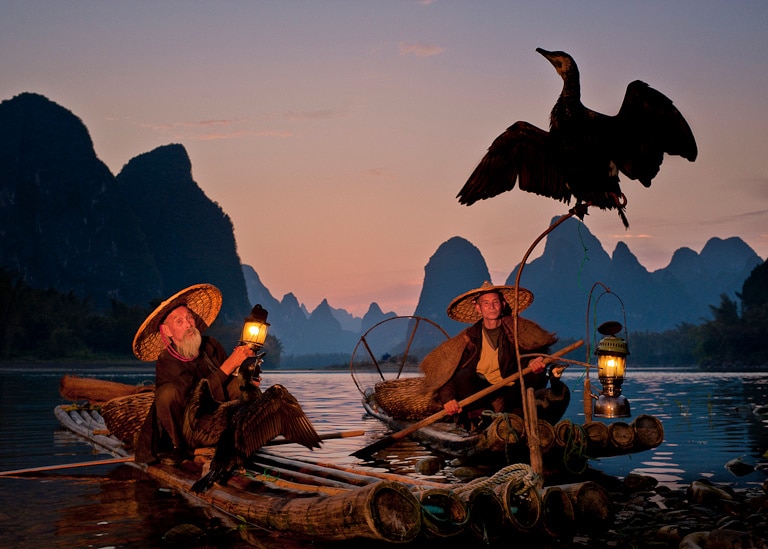
Dan Ballard is a Professional Fine Art Photographer from Colorado and is a member of our Pro Team. He has an extensive portfolio of award winning landscape and travel images. Dan’s images have been on display around US museums and galleries, and he has sold images to clients around the globe, including The National Geographic Society. His use of rich colors and compelling composition take you on a journey to some of the world’s most beautiful and far reaching corners. Today Dan shares some insight on how to create a powerful image.
Shoot Like a Painter, Think Like an Artist – by Dan Ballard
Photography is Art
To create a truly powerful image, we must combine light, elements of the world around us, and emotion in a way that speaks to the viewer in a profound way. Yet, due to the simplicity of pushing the little button, we almost never achieve that lofty end. Normally, we pull out the camera, aim and fire, giving almost zero thought to what we are doing.

In Contrast, Painting
A blank canvas. A brush. A palette of colors. An idea. Every element of a painting must be considered. What is the painting of? What style is it? Where will the elements be placed on the canvas? What will the lighting be like? From beginning to end, over the course of hours, days, or months, the elements that make up a painting come together. With the exception of the most abstract work, conscious and deliberate thought is involved in every aspect of creating, because it must be. If not, the paint and white canvas would not end up as picture.
Live and Learn
One of the most difficult challenges in becoming a better photographer is overcoming the ease of taking a picture. Anyone can do it, anywhere at anytime. All you really have to do is point and shoot after all. Taking a great picture however … now that is a challenge!
One of the first serious photography trips I went on was to South America. I had the good camera, the sharp lenses, and a decent amount of experience using them. Most importantly, I had the 20,000ft snow covered peaks and turquoise lakes of northern Peru in front of my lens. Each and every image I was taking was headed straight to National Geographic. This I knew. Not only were they going to Nat Geo, the editor himself was going to fly out and personally pick them up because they were that good! How could they not be in such a beautiful area? What a shock it was to return home and find that not only were the images not good enough for the Geographic, I didn’t even want to show them to my friends and family! The images in no way showed the beauty and power of the area.
Over time, through books, the Internet, shooting with other photographers and spending countless hours in the field, I learned what I did wrong on that first trip. I was hiking, not making art. I was looking at a beautiful scene in front of me, lifting the camera and shooting without thought.
The World is Your Canvas, Paint With It!
Try this exercise. Make your hands into an empty picture frame (or better yet, find an actual empty frame). Close one eye and look through your frame at the world beyond. What do you see? The frame you are looking through is your canvas. The world beyond is your paint. By moving your frame you are effectively “painting” with the world. When we use a camera instead of our hands and think about it in the same way we can “freeze” the painting and save it, and later print it. Another way to look at this idea would be to walk around a park with a live view LCD turned on. As you walk and point the camera in different directions a new image is always on the screen. If you had a giant version of this camera/LCD setup with a picture frame around it you would really be painting with the world.
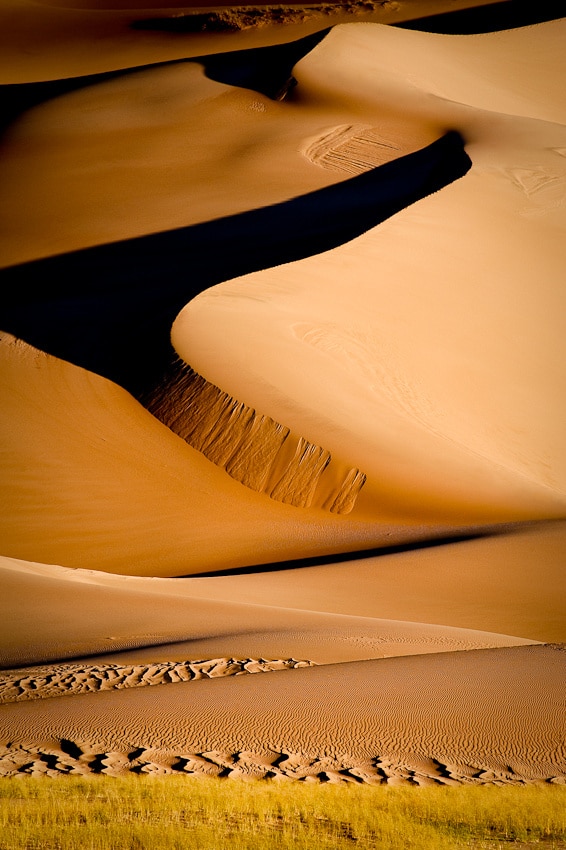
Simplicity
Simplicity is one of the most important words in photography. The most common mistake I see people make when they are first starting out is not taking clean simple images. Would you really hand paint a trash can in the corner of your mountain painting? Would you paint a tree branch coming in from the top right that has nothing to do with anything else in the painting? Look for simple scenes that only have a few elements, and always be completely aware of everything in your image. Do you want everything that is in the frame in the picture? If not, many times by moving only a few feet or even a few inches you can exclude an unwanted object from your shot.
Light
Photography is light. The type of light you shoot in directly relates to the image created. There is no such thing as bad light, and different types of light can be used throughout the day to capture great images. However, for most of us, shooting in early morning or late evening light is far superior. Light from the sun has to pass through much more atmosphere at these times and becomes much warmer and more suitable for photography. If you want to increase the number of great images in your portfolio, the number one thing you can do is go shoot at these times of day! Change the way you think about getting up early. Learn to enjoy it! It is, after all, one of the most beautiful times of day. All of the shots in this post and most of the images in my portfolio, were taken either during the very early morning or late evening hours. Because we can’t paint in the light and color we want, as photographers we have to go find it! Many times I had to return to the same spot numerous times to find the light I wanted.
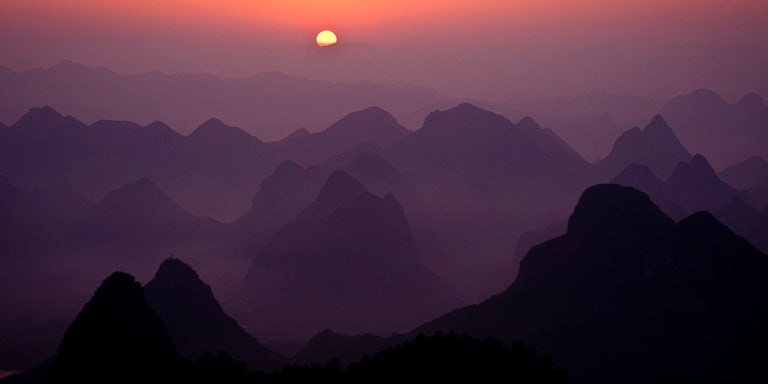
Look for Lines
Adding a line to a photograph is one of the best ways to add depth and flow to an image. Although you should spend as much time as possible learning about all the elements of composition (just like serious painters do) using lines is one of the most important aspects and one of the main things I look for when I am out shooting. Lines can be found as highways, railroad tracks, and rivers, but can also be found in things you wouldn’t expect. The dirt path in the image below of the woman walking for example, or a crack in the ice of a frozen lake.
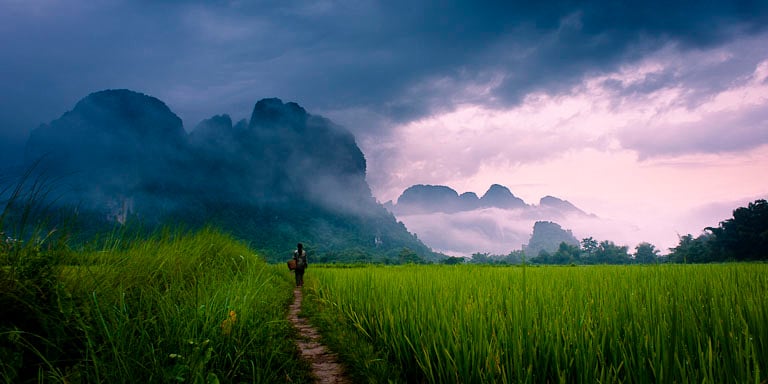
What Are You Trying to Say
When I was first learning photography, I often came across the phrase “what are you trying to say with your photograph”. I never liked it. I had absolutely no idea what it meant! “What do you MEAN, what am I trying to say!” It didn’t really make any sense to me. I knew it went along the lines of telling a story with your photograph and I understood that. I could even imagine how certain situations allowed a true “story” to be told with an image. Most of the time however, I didn’t see how it was possible. I am shooting a sunset, how can I tell a story about it with a picture! It is what it is.
Now that I understand the meaning, I agree with the idea, and even use it in my own teaching. I like to look at in a slightly different way however. If you can truly “tell a story” in the literal sense with an image, that is great, and it can be done more often then you would think. Normally however, it’s not really possible. In most situations “what are you trying to say” simply means, what is the point of this image? Why are you taking it? Why would anyone want to look at it? If it is a picture of a field taken mid-day in bad light with nothing of interest why would anyone want to see it? Every time you decide to take an image, THINK about why you are taking the image, and what makes it interesting. If you can tell a story, what is the story? Would you choose to paint what you are about to shoot even though it might take you a month of hard work to complete?
Click Often
Once you find your subject and know what you are after, never be afraid to take a lot of images. One of the great freedoms of digital is how cheap it is take thousands of images in a short time. People often confuse being deliberate with their shooting and the thought that they should only take a few images like they were shooting slide film. There are a lot of ways to look at this, and many pros have different ideas on it, but I personally shoot like crazy once I find everything I’m looking for. I often change positions and angles while shooting even if I’ve spent a long time looking for the absolute perfect shot. Sometimes that means subtle changes like moving the camera fractions of an inch on the tripod, and other times that means changing positions completely when the light is at its peak to find anther composition altogether. Even when doing the latter I am still completely focused on being 100% thoughtful and deliberate about what I shoot, although it has taken years to be able to do it well while moving quickly. Again we are painting with the world, and as the light of world changes we must react to it and move to control our paintbrush.
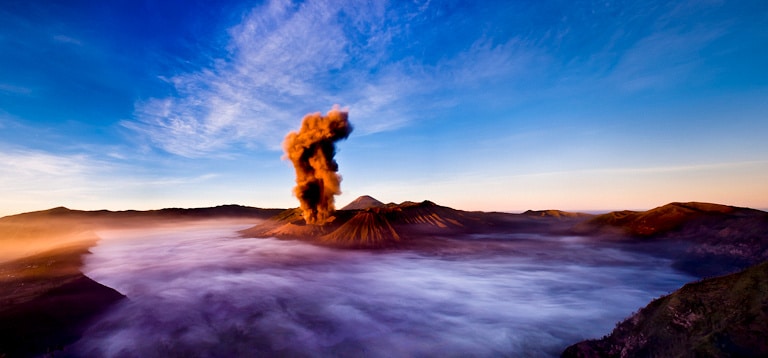
Putting It All Together
Taking incredible images is not about talent. It is not about being born with a “good eye”. It is about hard work. By considering the thoughts above, reading everything possible about taking better images, taking workshops and classes, and going out to shoot A LOT you will be able to create amazing images regardless of your current level!
Next time you take an image … paint a masterpiece.


